Indoor living walls come in various types, each with its own features and applications. Depending on the location, maintenance level, and desired appearance, a suitable system can be chosen. Below is an overview of the most common types of indoor living walls.
The 5 main benefits of an indoor living wall
Takes up little space
Improves the indoor climate and reduces absenteeism
Improves acoustics
Aesthetic added value
Increases productivity
Types of indoor living walls

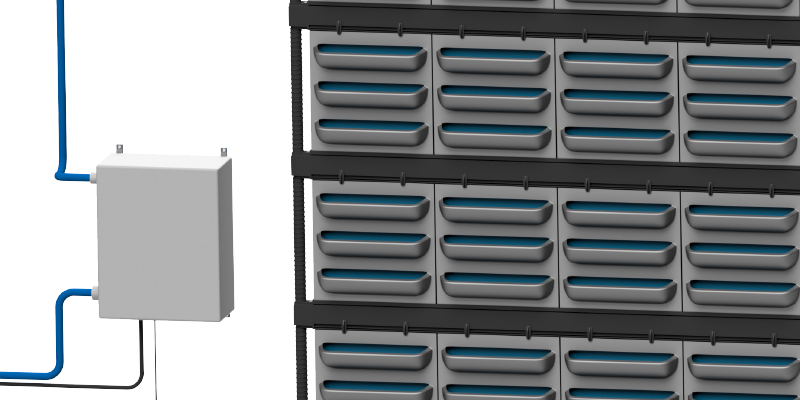
Indoor living walls with an automatic irrigation system
These systems are equipped with an advanced irrigation system that automatically provides water to the plants. They are suitable for larger areas or situations where regular maintenance is difficult.
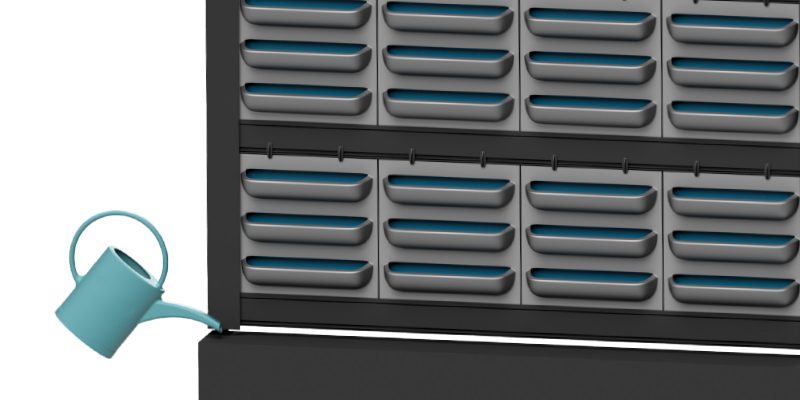
Indoor living walls with a water reservoir
These systems have a built-in water reservoir and do not require water supply and drainage. The water reservoir ensures a constant water supply. This reduces the frequency of manual watering and makes the system easier to maintain.
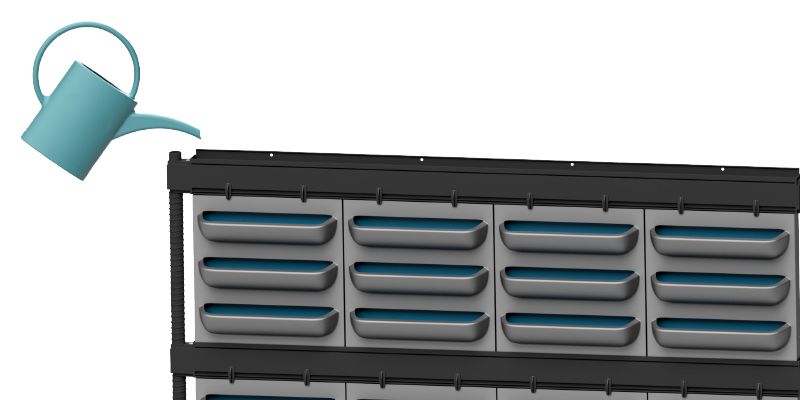
Indoor living walls with manual watering
These walls do not require electricity or water connections and are manually watered. They are easy to install and suitable for smaller spaces or locations where low maintenance is preferred.
Watering the living green wall
In addition to lighting, watering is crucial for healthy plants in the indoor green wall. Depending on the size of the wall, the gutters can be filled manually or automatically, with sensors providing water only when needed, making water use efficient.
The indoor living wall can also be watered via a water reservoir, a water supply placed at the bottom that needs to be refilled every two months. A timed pump ensures the water supply to the gutter profiles, for which an electricity connection is required.

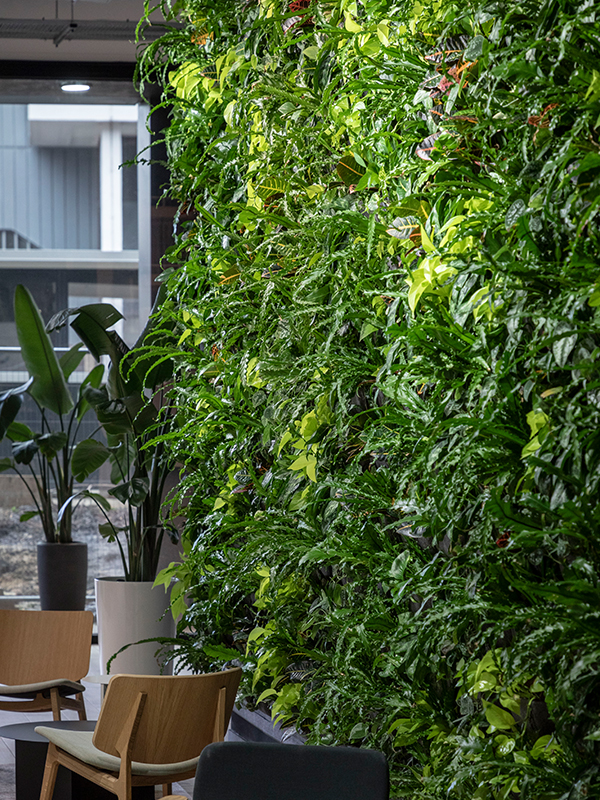
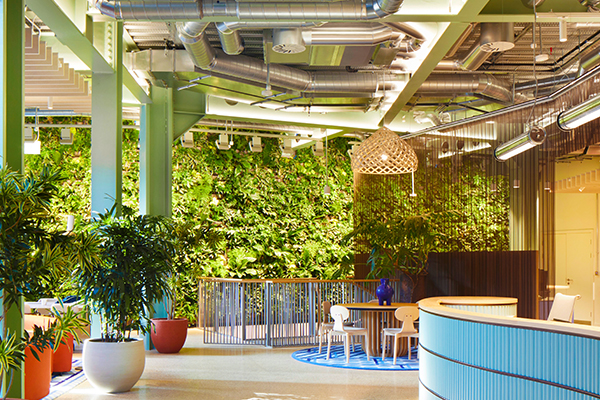
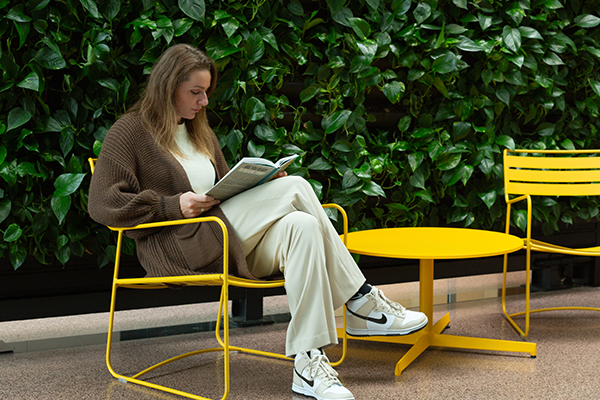
Where can an indoor living wall be applied?
Living green walls are suitable for a variety of spaces and offer both aesthetic and functional benefits. They create a pleasant, natural environment and improve the indoor climate. Plant walls have the ability to dampen sound, which is especially useful in large, busy offices. This reduces echo and noise disturbance. Whether it’s workspaces, public spaces, or private environments, indoor living walls can create a fresh and calming atmosphere everywhere.
Lighting for indoor living walls
The success of an indoor living wall is highly dependent on the lighting conditions, as plants require adequate light to grow. In indoor spaces, natural light is often limited, especially in corners or rooms without windows. Lighting with a daylight spectrum, such as LED grow lights, is an excellent solution. These energy-efficient lamps are specifically designed to provide the light spectrum plants need for photosynthesis and healthy growth, regardless of the environment.
To determine whether the plants in the living green wall are receiving enough light, it is important to measure the light intensity at the location. Using a lux meter, you can determine if additional artificial lighting is necessary, with an optimal light intensity between 500 and 2000 lux being essential for healthy plant growth. Need assistance? Our experts are ready to advise you on the right lighting for your indoor living wall.
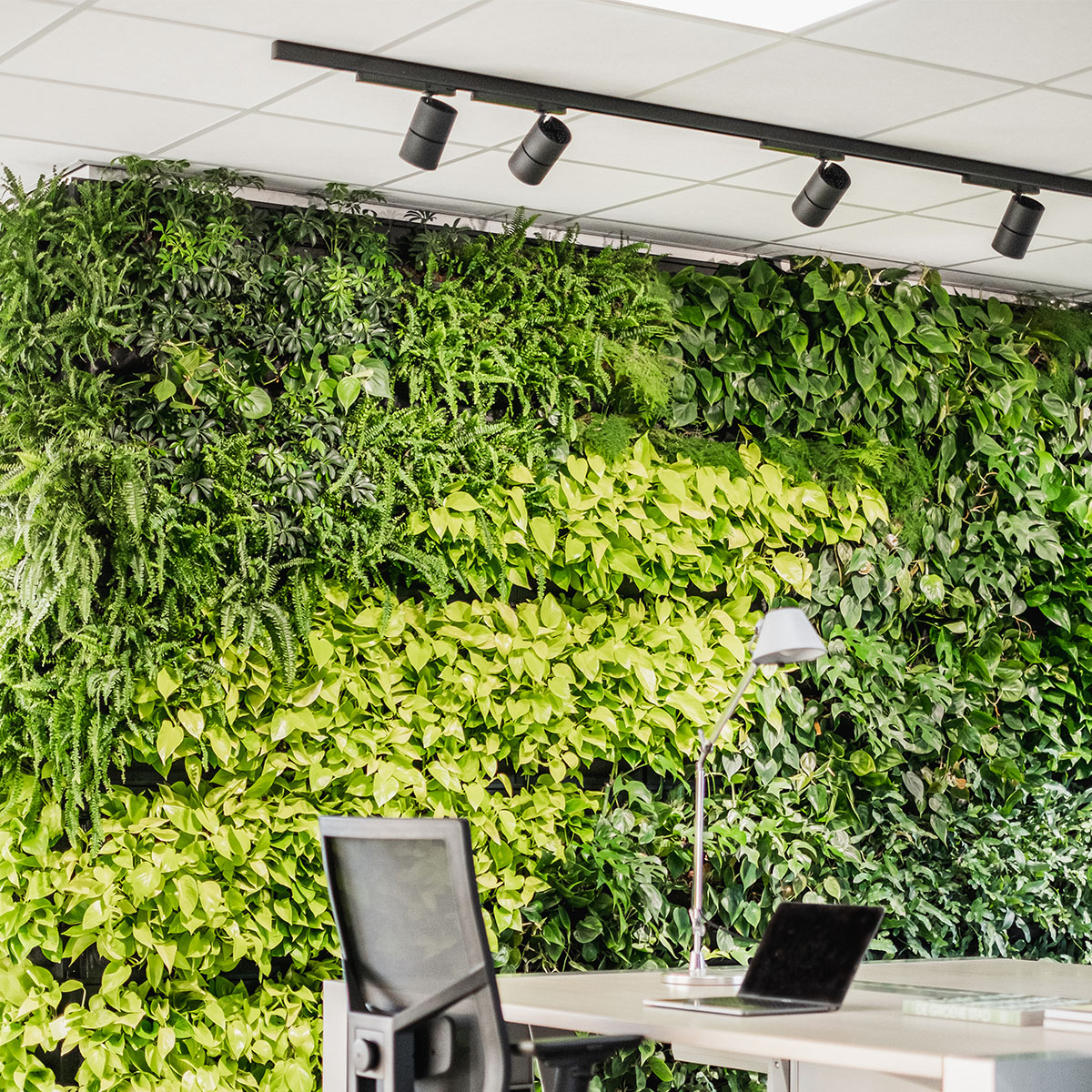
Discuss the possibilities with a specialist from Mobilane
Get in touch
By submitting this application, I agree to the privacy statement
An easy process
We begin with an introductory conversation.
Budget, planning, and quotation
Installation and handover of the living wall
Installation and maintenance
Space-saving
In environments where every square metre counts and rental prices can be as high as €625 per m²*, vertical greenery offers a space-saving solution. An indoor living wall makes use of vertical space, preserving valuable floor space, unlike traditional plant pots or containers. This makes the product particularly attractive for offices, shops, and hospitality venues where efficient use of space is essential. Moreover, modular systems are easy to customise, making these green solutions flexible, even in small spaces.

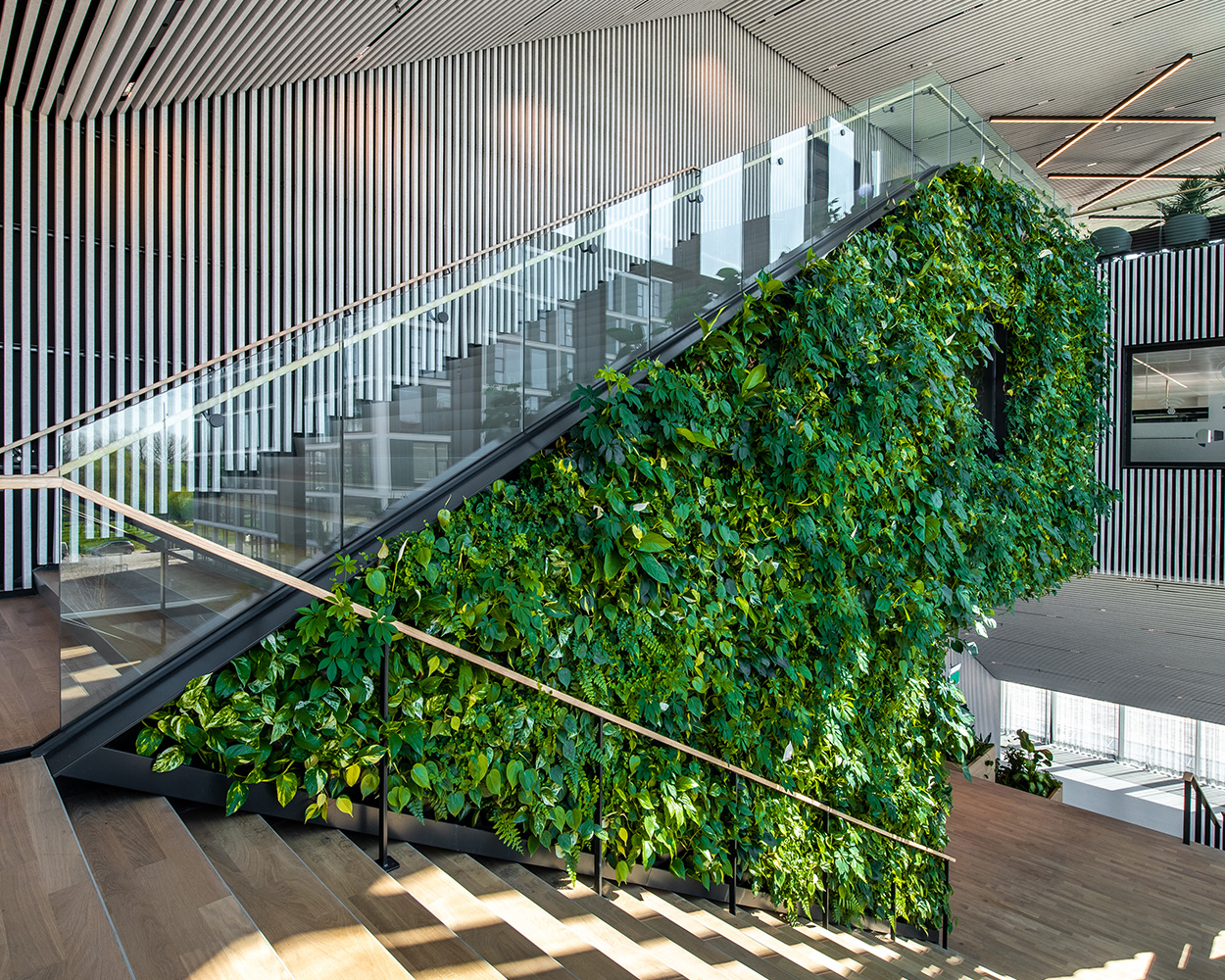
Acoustics: How indoor living walls absorb sound
Indoor living walls play an important role in improving the acoustics of indoor spaces. Due to the unique structure of plants and leaves, sound waves are absorbed and dispersed, reducing echoes and disruptive reflections. This is especially effective in busy office spaces, waiting rooms, and schools, where silence and concentration are essential. Research by Peutz bv shows that the LivePanel system significantly reduces reverberation time and decreases sound reflections, particularly in the frequency range crucial for speech intelligibility. Want to know how indoor living walls improve sound quality?
Read the full study hereHow an indoor green wall improve humidity
Indoor green walls not only enhance the appearance of a space but also actively contribute to a healthier indoor climate. Through the process of transpiration, plants release water vapour into the air, which can increase the humidity by 5-10%, especially in spaces with dry air, such as offices with air conditioning. This results in less dry eyes, a more comfortable environment, and a healthier indoor climate. Plants such as Spathiphyllum, Monstera, and Ferns have the most significant impact in this regard. Want to know exactly how this works and which plants are most effective?

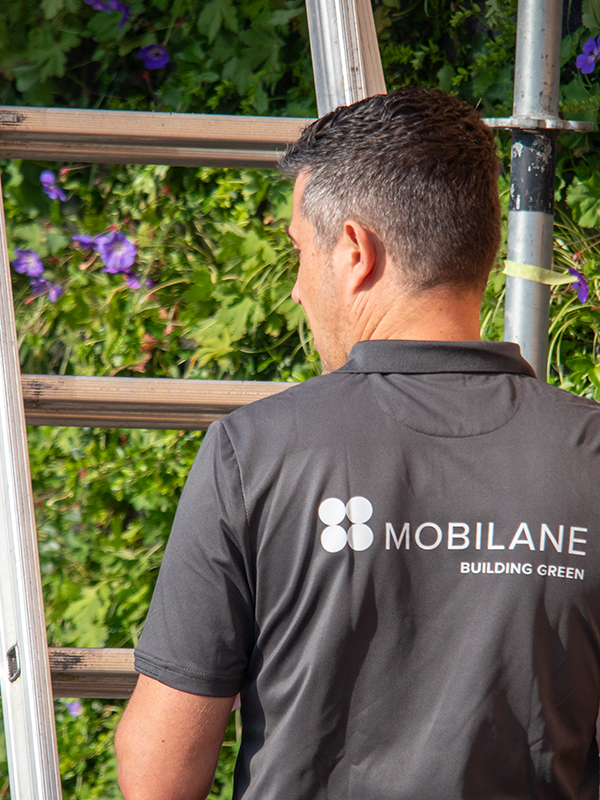
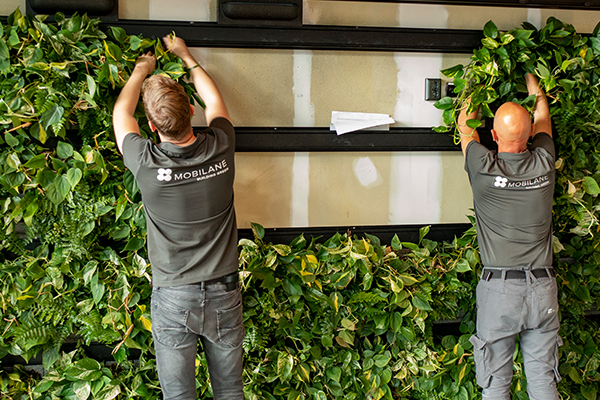
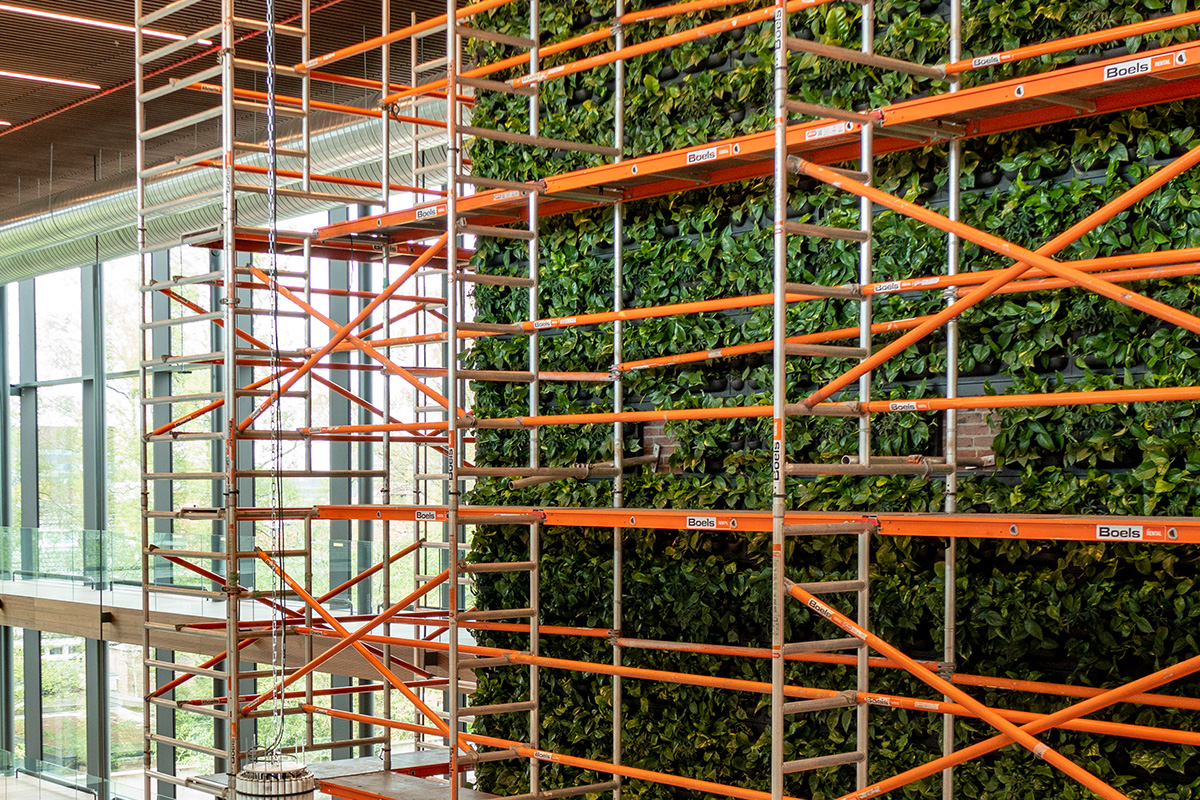
Installation living green walls
Installing an indoor green wall requires a sturdy and suitable substrate, as the system, including plants and substrate, carries some weight. Depending on the type of indoor living wall, a water connection and drainage may be needed, particularly with automatic irrigation systems. For locations without a direct water connection, there are systems with an integrated water reservoir. Additionally, good lighting is essential, especially in spaces with little natural light, to ensure the plants grow optimally. Our partners ensure professional installation and advise on the best technical solution for your space.
Maintenance of indoor green walls
Maintenance is crucial to keep an indoor living wall healthy and vibrant. In addition to regular watering, plants also need nutrients to grow well and maintain their air-purifying function. Pruning is also important to maintain the shape and density of the wall and remove dead leaves. To make this easy to manage, we offer the option to sign up for a maintenance contract with one of our specialised partners. They will ensure proper care so your indoor living wall stays in top condition.
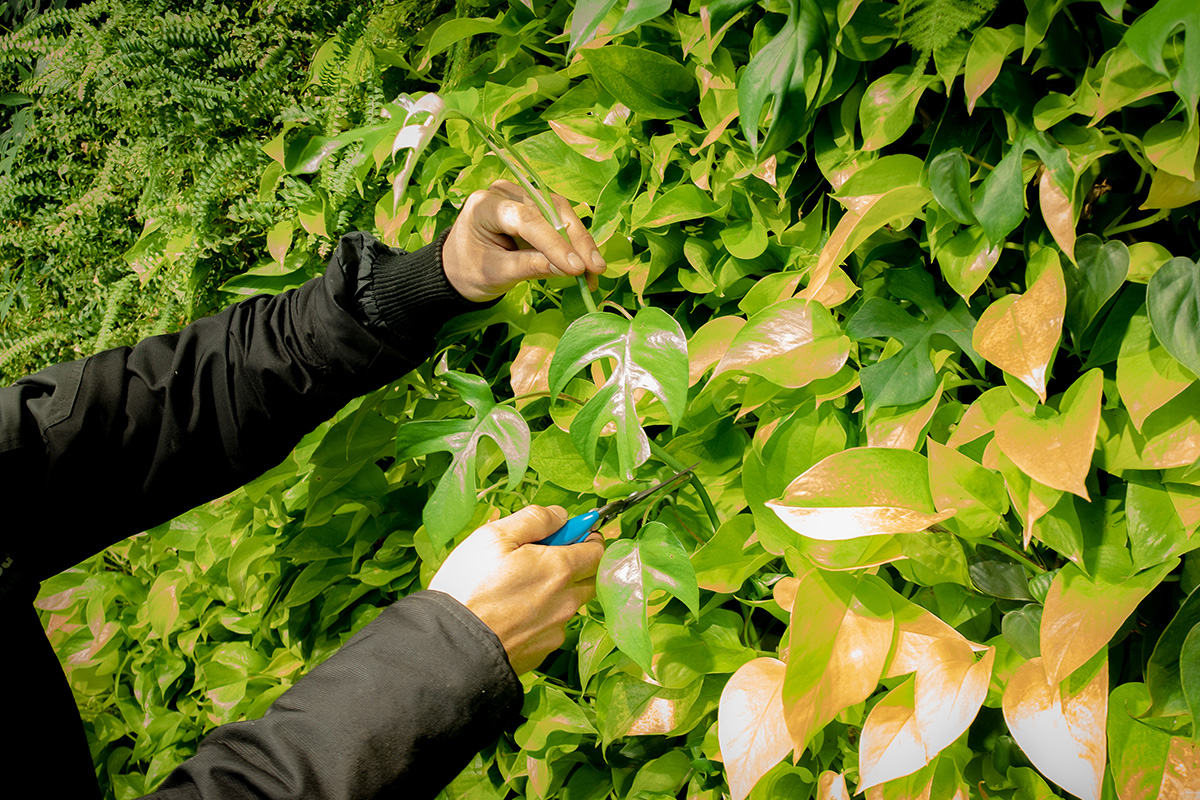
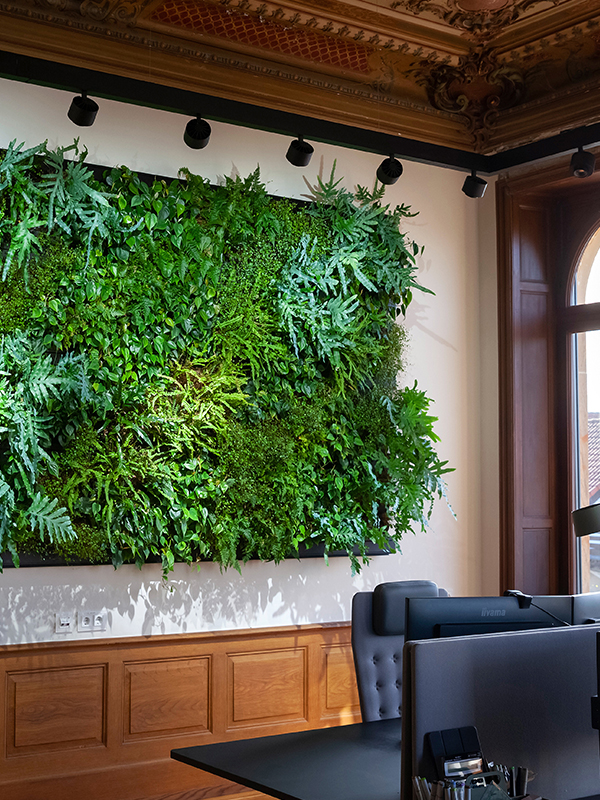
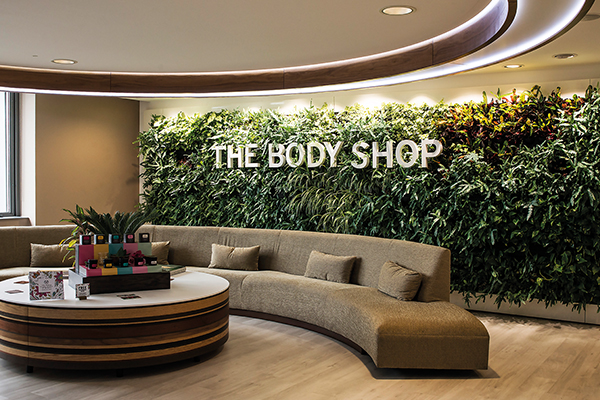
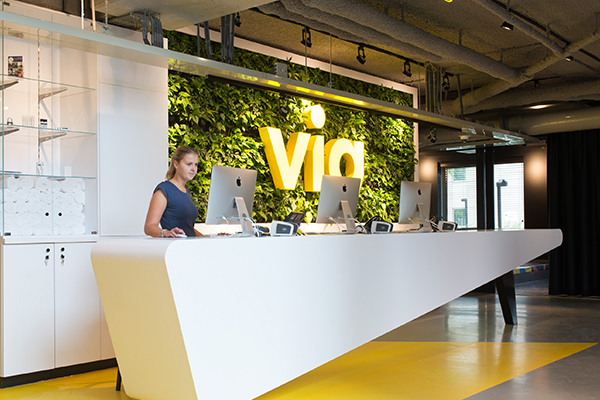
Plant selection for indoor living walls
The choice of plants for an indoor living wall depends on the light conditions in the space. There are various design possibilities: you can choose a wild mix of diverse plants for a natural look, a structured pattern for a more sleek appearance, or a uniform planting in one colour for a calm and consistent effect. It is also possible to incorporate a custom logo into an indoor living wall, with plants carefully positioned to accentuate the design.
Indoor living wall training for interior professionals and architects
We offer training, presentations, and ‘lunch & learn’ sessions for interior professionals and architects at our production facility in Bemmel. During these sessions, you’ll not only gain theoretical knowledge but also have the opportunity to view production in our social workshop, offering a unique chance to experience the process up close. These training sessions can also be offered on location or virtually, depending on your preference.
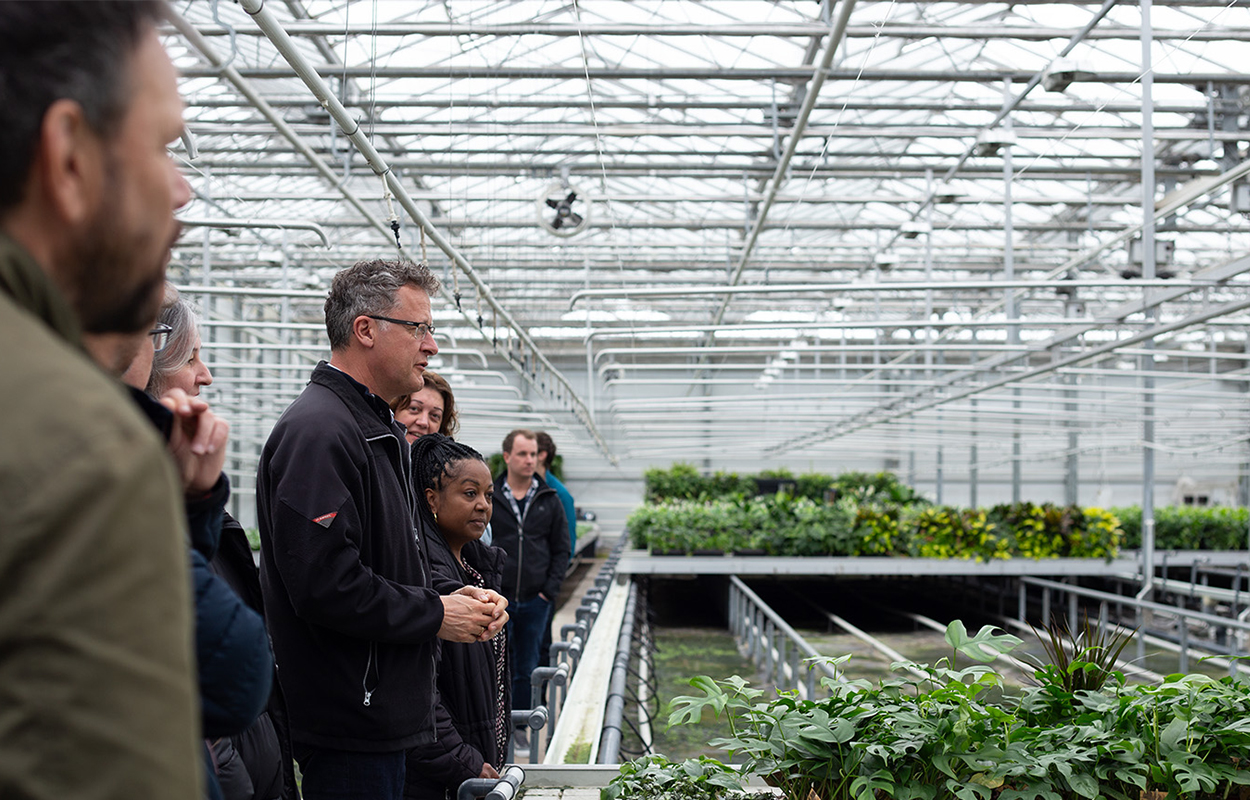
Inspiring indoor green walls
More case studiesFrequently asked questions
All frequently asked questionsThe lifespan of an indoor living wall can vary depending on factors such as the quality of the plants, maintenance, and environmental conditions. Regular pruning, watering, and maintaining the correct light and humidity levels are essential for a long lifespan.
There are various plants suitable for an indoor living wall. The Mobilane Plantguide lists all the flowers and plants that are suitable for an indoor plant wall. You can create your own plant mix or choose, for example, the Breath of Fresh Air mix: a selection of air-purifying plants chosen by NASA. Of course, we are also happy to assist in putting together a plant mix for your living wall. For advice or more information, please contact Mobilane Technical Support.
There are various indoor living wall systems on the market, with weights ranging from 25 to 90 kg per square metre. This weight is exclusive of water and plants and is influenced by factors such as the type of substrate, the thickness of the system, and the material of the panels.
The cost of an indoor living wall can vary significantly depending on various factors, such as the size of the wall, the type of plants, installation, and any maintenance contracts. On average, an indoor living wall costs between €200 and €800 per m² (excluding VAT, including installation).
LivePanel Pack is a ready-made solution for an indoor living wall, available in four different standard sizes. The plant wall is manually watered, with no pump or electrical connection required. The LivePanel system by Mobilane is an innovative application of vertical greenery. With LivePanel, larger areas can be covered with greenery, but it does require an irrigation system.
LivePanel Indoor can be easily installed on new or existing walls. Due to its lightweight design and the customisable, cut-to-size cassettes, the indoor living wall can be adapted modularly to fit the space.
The water reservoir of the LivePanel PACK provides the indoor living wall with water for approximately two weeks, depending on the indoor climate and location. The LivePanel is available both with and without an irrigation system. For larger walls, it is advisable to install an automatic irrigation unit. When the LivePanel indoor living wall system with an irrigation unit is installed, automatic watering takes place. For smaller walls, manual watering can be chosen.
The maintenance of an indoor living wall includes regular watering, checking the plants, and replenishing nutrients. We recommend having this care provided by professional interior landscapers to ensure the health of the living wall and promote optimal growth.
Yes, indoor living walls contribute to earning points in certification systems such as BREEAM, LEED, and WELL. They enhance the ecological value of a building, promote air quality, support biodiversity, and improve the well-being of the users, all of which contribute to a higher sustainability score.
Discuss the possibilities with a specialist from Mobilane
Get in touch
By submitting this application, I agree to the privacy statement
















